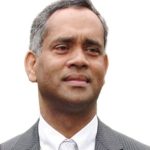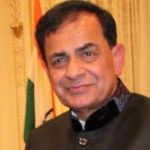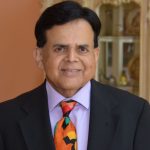On August 15th, 2022, as the nation celebrated its 75th anniversary of India’s Independence, a Letter was sent to the President of India, Droupadi Murmu, signed by 100 world renowned writers, journalists, creative artists, “to express our grave concerns about the rapidly worsening situation for human rights in India, specifically freedom of speech and creative expression, on the eve of India’s 75th anniversary of independence.”
Freedom of speech—the right to express opinions without government restraint—is a democratic ideal that dates back to ancient Greece. In the United States, the First Amendment guarantees free speech. When it comes to democracy, liberty of thought and expression is a cardinal value that is of paramount significance under our constitutional scheme.
However, this freedom of speech/expression, a fundament right enshrined in Article 19 of the Constitution of India is being eroded, more in the recent past. The many measures restricting freedom of expression, punishing and intimidating those who report corruption in the government, and the many evils prevalent in society have become a common practice for those in power at many state and federal levels.
The authorities in power have used and abused various sections of the Law to intimidate and punish those who criticize the people and policies of the ruling Party. Reporters Without Borders ranked India in 15-th place out of 180 countries in its 2022 World Press Freedom Index.
Human Rights Watch reported in 2022 that “Critics of the Bharatiya Janata Party (BJP)-led government in India including activists, journalists, peaceful protesters, and even poets, actors, and businesses increasingly risked politically motivated harassment, prosecutions, and tax raids. Authorities shut down rights groups using foreign funding regulations or allegations of financial irregularities. ”
The Indian authorities routinely use vaguely worded, overly broad laws as political tools to silence and harass critics, Human Rights Watch said in a report. The government should repeal or amend laws that are used to criminalize peaceful expression, it stated. “India’s abusive laws are the hallmark of a repressive society, not a vibrant democracy,” said Meenakshi Ganguly, South Asia director at Human Rights Watch. “Putting critics in prison or even forcing them to defend themselves in lengthy and expensive court proceedings undermines the government’s efforts to present India as a modern country in the Internet age committed to free speech and the rule of law.”
In addition to banning various authors and publications, “Charges of sedition have recently multiplied in India as a way to curb free speech and to intimidate government critics,” writes Mira Kamdar at the Pacific Council on International Policy. “India has become a dangerous place to be a journalist,” and adds, “India’s media has become increasingly concentrated in the hands of powerful. High-profile journalists whose views do not toe the new line have been pushed out or quit their jobs. Self-censorship by journalists is a growing problem. Those who do speak out regularly face harassment and threats.”
The Columbia Global Freedom of Expression pointed to the Supreme Court of India’s ruling that an indefinite suspension of internet services would be illegal under Indian law and that orders for internet shutdown must satisfy the tests of necessity and proportionality. The highest court in India ruled that “Restrictions under Section 144 of the Code of Criminal Procedure could not be used to suppress legitimate expression and are subject to judicial scrutiny.”
Romila Thapar, who has specialized in the study of early Indian history and historiography, and is a Professor Emerita at the Jawaharlal Nehru University, New Delhi, aptly describes the state of India at 75: “Some Indians in authority, seem averse to India being a secular democracy. Therefore, poverty and unemployment prevail, nationalism is being replaced by religious majoritarianism, freedom of expression is increasingly disallowed, the rights of citizenship have faded, and the security implicit in being a citizen is denied. How do we fulfill the aspirations of the national movement for Independence? That is the question we should be asking.”
At independence, India offered a beacon of hope—a secular society choosing democratic governance and a Gandhian vision of inclusion and tolerance. Prime Minister Jawaharlal Nehru spoke of India’s ‘tryst with destiny,’ and the hope is that the country will live up to the dream of Nobel Laureate, Rabindranath Tagore: “Where the mind is without fear,‘…. ’into that heaven of freedom, let my country awake.”

Ajay Ghosh
Chief Editor, The Universal News Network
India Is A Global Player
As an Indian American, who had left India more than 40 years ago, it makes me extremely proud to see how my Motherland has progressed over the years, especially since 2014 when Prime Minister Modi took the helm of the country.
The Azadi Ka Amrit Mahotsav honors the advancement of India and the culture of our people. On Oct. 1st this year, Modiji launched 5G services in India! And he spoke of the common people of India adapting to new technology at a greater speed.
Not only is India the world’s largest democracy, but as The World Bank says, “Over the past decade, the country’s integration into the global economy has been accompanied by economic growth. India has now emerged as a GLOBAL PLAYER.”
Just a couple of weeks ago, India surpassed the United Kingdom to become the 5th largest economy in the world. And in terms of purchasing power parity, meaning how much a rupee can buy, it is the world’s third-largest economy, according to World Bank data.
India’s recent growth has been a significant achievement. And since independence, its agricultural revolution has made it self-sufficient and a net exporter of food!
Since 2001, India has built all-weather rural roads for millions of people living in 171,000 small villages and habitations around the country, so they can increase family incomes, reach markets, hospitals, schools and entertainment. It is building infrastructure like ports and ships, defense equipment, strategic alliances in the Indo-Pacific and elsewhere, space technology, the list is endless.
And Modiji’s “Make In India” initiative is strengthening the country towards economic growth and independence.
India has taken global leadership in areas such as health and climate change. During COVID, it has been manufacturing vaccines that can be distributed to countries in Africa and Latin America, and other parts of the world; it has been producing medicines for HIV, Rotavirus, and numerous diseases that are available at low prices so that poor can afford them around the world!
India has spread the message of Yoga for health, non-violence for a more peaceful world, and solar energy for a sustainable planet. Its space program is the epitome of what can be achieved by its people. Its scientists, engineers, doctors and entrepreneurs are the envy of the world.
And Prime Minister Modi plans to get to India 2.0, through his Atmanirbhar strategy of independence. His Azadi ka Amrit Mahotsav initiative which officially began on March 12, 2021 and ends August 15, 2023 – is the symbol of all that makes India into the vibrant and progressive country it is today.

Sudhir M. Parikh, M.D.
Chairman & Publisher-Parikh World Wide Media; Chairman-ITV Gold (24/7 TV Channel)’; Chairman-Life Global; Chairman-Center for Asthma & Allergy; Secretary General of Global Association of Physicians of Indian Origin (GAPIO); Padma Shri Awardee 2010; Pravasi Bharatiya Samman Awardee 2006; Ellis Island Medal of Honor 2005
Changing Landscape Of India After 75 Years Of Independence
From being an education hub of the world in ancient times to becoming the IT hub of the world today, the Indian landscape has come a long way.
The Landscape of Education and Health.
In 1947 India had a population of 340 million with a literacy rate of just 12%. Today it has a population of nearly 1.4 billion and a literacy rate of 74%. The average life expectancy has also risen from 32 years to 70 years in 2022. Even though India has shown remarkable progress in terms of literacy rate, the quality of higher education is still a cause of major concern.
However, some other fields like health and education still seem to be lacking behind as compared to the other developed countries. The health sector is also lacking behind. The doctor to patient ratio is merely 0.7 doctors per 1000 people as compared to WHO average of 2.5 doctors per 1000 people.
At present 65% of medical expenses in India are paid out-of-pocket by patients as per a recent study. The main reason behind this is that the patients have no alternative but to access private healthcare because of poor facilities in public hospitals.
The Economic Landscape.
India’s economy has expanded significantly in the 21st century. Under the Prime Ministership of Mr Narendra Modi many significant changes have taken place like the scraping of section 370, strengthening of the defense system, creating a startup-friendly environment, and much more.
In addition Mr. Modi’s administration launched several programs and campaigns, including ‘Make in India’, Digital India and the Swachh Bharat project. Today India is the fifth largest economy in the world with 147 lack crore GDP, accounting for 8% of the global GDP.
The Landscape of Defense Sector.
The Indian military is one of the largest Defense systems in the world because of the defense research and development organization established in 1958. In summary, analyzing the different landscapes of India we find that we have come a long way in our journey but still there is a lot to be done if we want to make India a superpower. A lot will depend on our people’s willingness to change, ensuring the equal participation of women in the workforce, including marginalized communities in our economic growth, and last, but not least is having a liberal and progressive and unbiased mindset.

Gautam Samadder, M.D
Past President, AAPI
Nurture Democracy To Be A World Leader
India Proudly celebrates Azadi Ka Amrit Mahotsav!
India @75 has emerged as the world’s largest sustainable democracy. A growing power with an aspiration to be the third largest economy after US and China.
For me, India’s biggest asset or strength is its constitution which talks about Unity in Diversity, which gives strength to live in an inclusive way in a diverse society and helps its people to rise not just at the national but international level.
Swami Vivekanand had rightly said: “The land where humanity has attained its
highest towards gentleness, towards purity, towards calmness – it is India.”
No doubt India has evolved since the Britishers left but it will be essential for India to stay focused on reducing inequality, nurture and value democracy, focus on proper education, and yes, check the growing population, which at present is 1.38 billion and will surpass China in 2023.

Ritu Jha
Chief Editor/Publisher, Indica News
I Am Proud Of India And I Am Proud As An Indian Immigrant.
Hearty congratulations to all Indians for a grand celebration of 75 years of independence!
India has achieved a lot during the last 75 years, especially during the last 25 years. India has become a world leader of Pharmacy and information technology. India has become one of the richest countries of the world. Infrastructure, Airline, Health, and travel industries have grown tremendously during the last 25 years.
India has produced some of the best Physicians, company CEOs, and great thought leaders.
Indian immigrants have done extremely well in several countries including the USA.
I am proud of India and I am proud as an Indian Immigrant!

Subrahmanya Bhat, MD, FCCP, FACP, DNBPAS
Board member, Georgia Composite Medical Board; Trustee, Clayton State University
Past President of the Association of Kerala Medical Graduates
This Century Belongs To India
August 15th, 1947! A day to remember all those who fought, laid their precious lives for us to enjoy this happy occasion.
Today is the day not to forget why they sacrificed their lives, their mission & purpose of the long struggle.
A day to reflect on what we can do so that each of our fellow citizens live a life of respect dignity and prosperity.
In 75 years, we have achieved a lot.
At 75, India is full of energy, realizing it’s true potential, retaining its culture, and yet going modern. More needs to be done in the coming years so that India @ 100 will be a fully developed nation, the most powerful nation in the world and a Vishwa Guru.
This century belongs to India. In the coming years, India is going to be the manufacturing Hub . Also being the country with the youngest population, English Speaking population, and skilled labor, India is unstoppable. India will be the powerhouse of development. India@ 100 will be top three Economies in the world.
Vande Mataram! Happy Independence Day!

Jagdish Sewhani
President, The American India Public Affairs Committee
India Has A Rich History Engrossed With Thousands Of Years Of Civilization
I was born years after India gained independence. But so much have I heard from my grandfather, who was a freedom fighter too. He used to repeat that Gandhiji, Nehru, Netaji, Vallabhbhai Patel, and many others united the Indian people and fought to get India’s independence from the British. Later on, in school, it was the history of heroic stories of India. Looking back today, I am proud to be an Indian because India has a rich history engrossed with thousands of years of civilization and culture, absorbing and rise of religions and empires, British Rule, Revolution, Independence, and, no doubt, now emerging as a world power.
The world’s largest democracy and second-most populous country in this 21st century, India is a dynamic nation with a thriving economy, made up of a variety of beliefs and peoples united under one flag.
If small nations, like Japan could meticulously attain a leading position, India, with its large population and vast resources, could have emerged as number one by this time. For this world’s largest democracy, it is highly advantageous to remember that with British rule, English is the most important language for national, political, and commercial communication, and we can have instant contact worldwide.
The country has gone from having a GDP of just Rs 2.7 lakh crore at the time of Independence to now sitting close to Rs. 150 lakh crore. India is now a healthcare hub with exporting affordable medicines worldwide. Indian students are flying off to all developed countries for higher education in engineering, advanced medical research and the latest information technologies.
The new plans and projects are changing INDIA, its roads, railways, and digital telecommunication, with solar-powered airports of the highest qualities across the nation, and have multiplied the image and status of the New emerging INDIA.
Though we beat our trumpets a lot on our achievements, India appears to be suffering from a stinking bureaucracy and corruption among the administration and high political leaders. Whereby the country’s resources are underutilized or exploited. We must revive its democratic syncretic and inclusive credentials to be on the top list. We need to trim or eliminate all weeds that eat up tender growths.
India is not that India that the British left on 1947. With its incredible progress, India’s present history continues to be the most enviable topic for developing countries globally. As an Indian American, I am proud to see India making hope- step- and jump each day to become a leading nation in the world, while celebrating Azadi ka 75th Amrit Mahotsav

Dr. Mathew Joys, Author, Writer
BOD Member, Indo-American Press Club
Editorial Board Member, The Universal News Network
